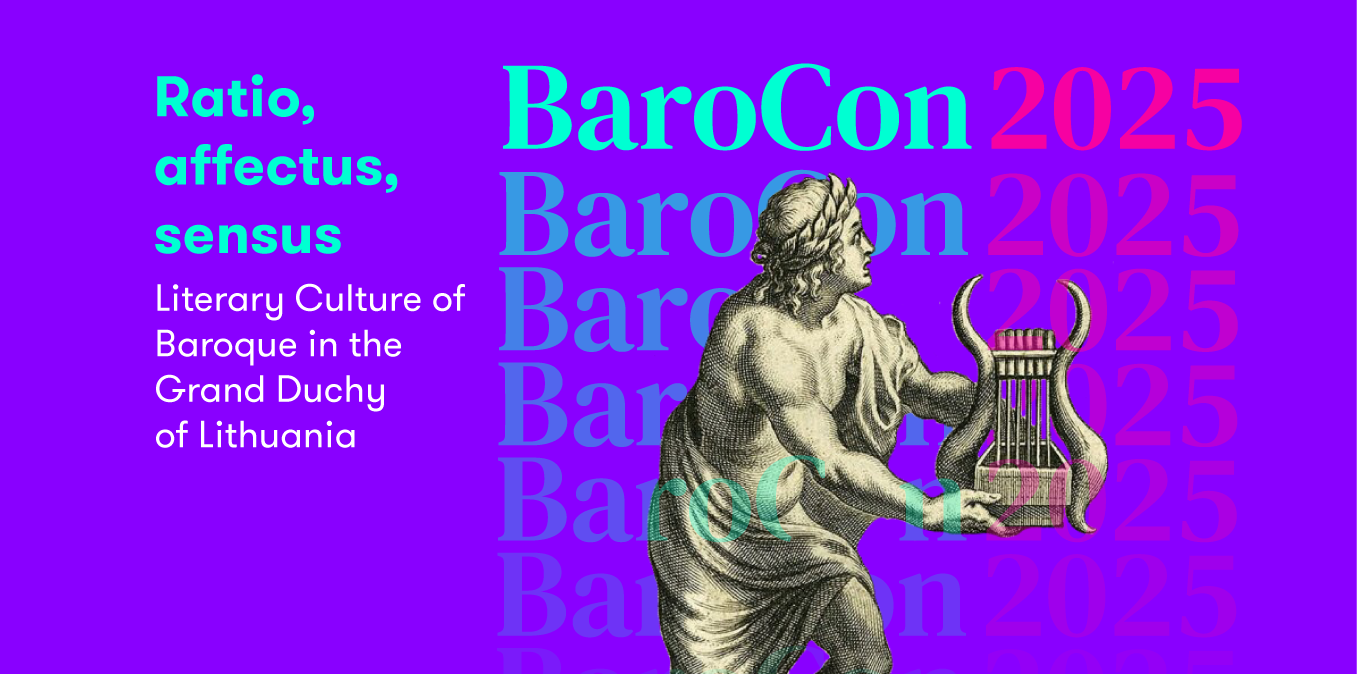Ratio, affectus, sensus: Literatūrinė baroko kultūra Lietuvos Didžiojoje Kunigaikštystėje
Prieš 400 metų buvo pirmąkart buvo išleistas garsiausias Motiejaus Kazimiero Sarbievijaus lotyniškos poezijos rinkinys Lyricorum libri tres (1625 m.), dėl to 2025-ieji metai Lietuvoje paskelbti Baroko literatūros metais. Abiejų Tautų Respublikos neolotyniškasis jėzuitų poetas Sarbievijus buvo vadinamas krikščioniškuoju arba sarmatiškuoju Horacijumi. Jo teorinės mintys apie poeziją ir retoriką tebėra vertinamos ir įkvėpia vis naujus Baroko literatūros ir autorių tyrimus, tad šis jubiliejus suteikia galimybę patyrinėti Baroko literatūrinės kultūros mastą ir įvairovę, kuri pastaraisiais dešimtmečiais sulaukė didelio susidomėjimo tiek akademiniame pasaulyje, tiek populiariojoje kultūroje. Šia proga Lietuvių literatūros ir tautosakos institutas bei Vilniaus universiteto Filologijos fakultetas rengia tarptautinę mokslinę konferenciją „Ratio, affectus, sensus: Literatūrinė baroko kultūra Lietuvos Didžiojoje Kunigaikštystėje“, kuri vyks 2025 m. rugsėjo 25–27 d. barokiniame Vilniuje.
Daugiadisciplininės konferencijos tikslas – paskatinti diskusiją apie „ilgojo XVII a.“ (nuo XVI a. pabaigos iki XVIII a. vidurio) literatūrinę kultūrą Lietuvos Didžiojoje Kunigaikštystėje. Šis istorinis laikotarpis, susijęs su dramatiškais pokyčiais ir visuotine kultūros krize, dažnai apibūdinamas prieštaringai, nuolatinėje įtampoje tarp proto ir jausmų, griežtos struktūros ir aistrų bei pan. Atsižvelgdami į šį prieštaravimą, kviečiame nagrinėti Baroko literatūrą ir jos raišką per dinamiškos proto (ratio), emocijų (affectus) ir jausmų (sensus) sąveikos prizmę, kurią galima įžvelgti įvairiuose šio laikotarpio žanruose ir vėlesnėje jų recepcijoje, išlaikančioje barokinę dvasią.
Kviestiniai pranešėjai

Ona Dilytė-Čiurinskienė
Vyr. mokslo darbuotoja, LLTI
Prof. Stephen Harrison
Oksfordo universiteto profesorius
Mikołaj Walkowicz
In the clash with the plague. The image of the plague in Lithuanian Baroque and post-Baroque texts
Mikołaj Walkowicz
Jagiellonian University
In the clash with the plague. The image of the plague in Lithuanian Baroque and post-Baroque texts
Keywords: plague, literary visions of diseases, applied literature, medical writing
The plague was one of the permanent elements of the early-modern world. It left its stamp on almost every generation, being a constant reminder of the fragility of life. This resonated with the literary world, which made various attempts to describe the nature of the plague, which led to publications trying to tell of as accurately as possible the causes and treatment of the disease, books containing a number of magical formulas to counteract it, and a plethora of literary texts attempting to convey the emotions associated with the onset of the plague. Faced with the impossibility of determining the actual causes of that disease throughout the early-modern period, both utilitarian writings, which served as a kind of handbook against the plague, and literary texts, operated on a series of customs and imaginings, the aim of which was to tame a reality that was impossible for the people of the time to comprehend. Previous studies of works touching on the subject of the plague in various ways have mainly focused on the analysis of individual works, or attempts to synthesise the themes as a whole. In this presentation, an attempt will be made to analyse the subject matter of plague-related writing more broadly. On the basis of literary and applied texts, the reception of certain contents, sometimes known throughout Europe, as well as concepts originating in the Lithuanian lands will be presented, and an attempt will be made to answer the question of whether a periodisation and clariography can be pertained to applied texts dealing with the plague.

